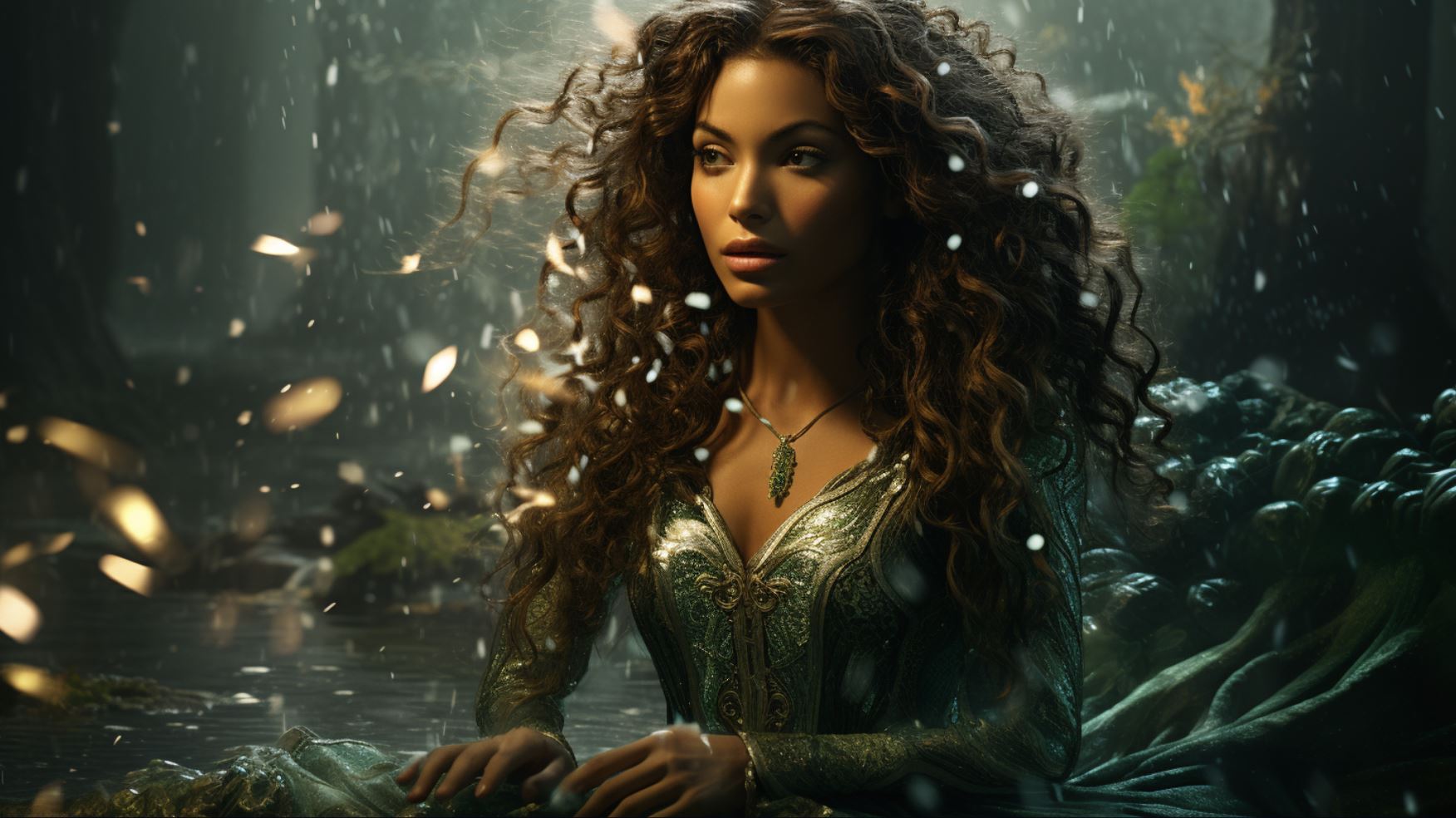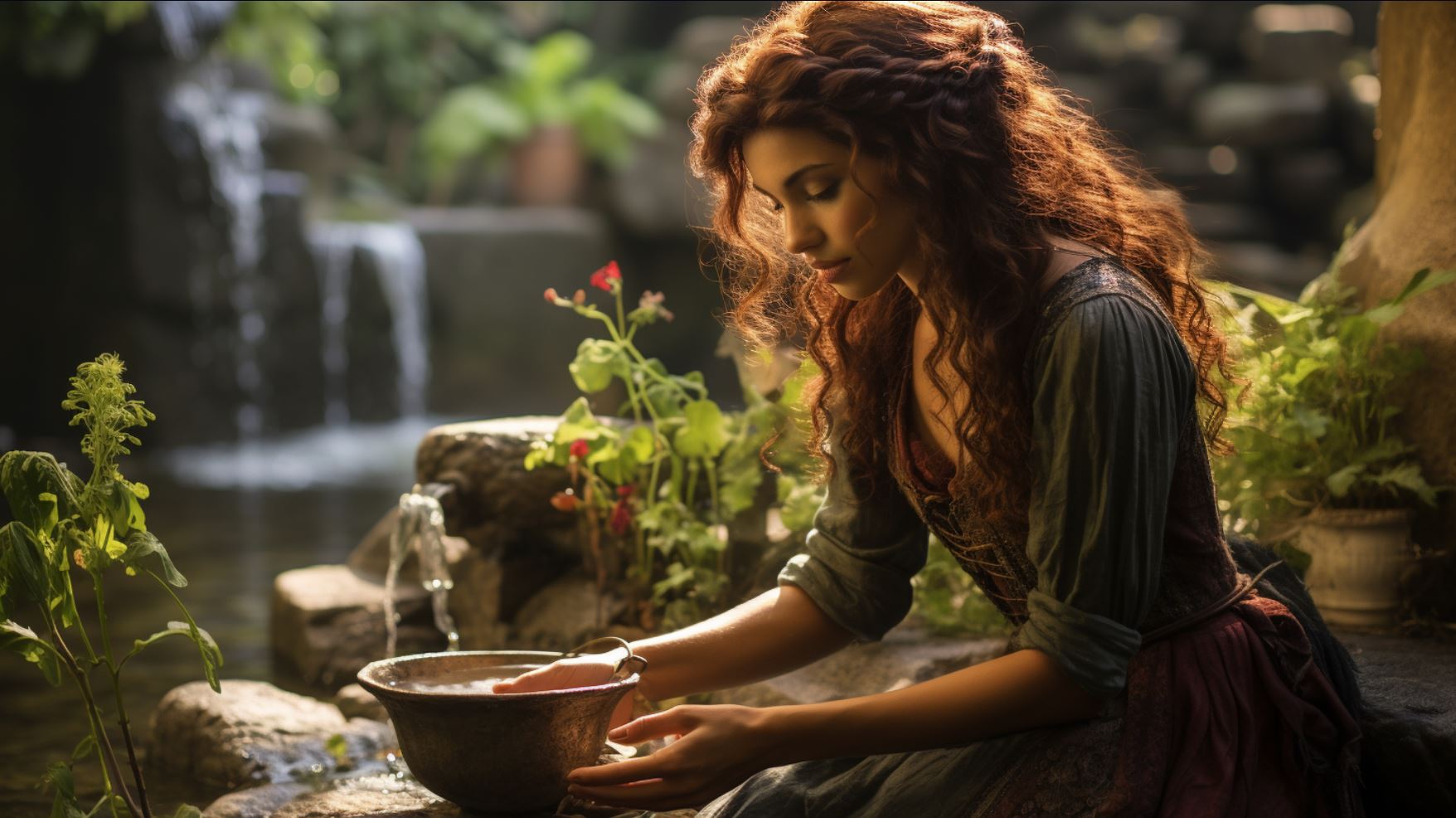Sabrina Celtic Goddess: Unveiling the Mythology and Power of the Severn River Nymph

The legend of Sabrina Celtic Goddess holds a captivating tale of love, tragedy, and resistance against patriarchy. Born from the union of King Locrinus and Gwendolen, she met a tragic end at the hands of her own mother, only to rise as a powerful nymph and symbol of feminine strength.
Sabrina’s story has been immortalized in various forms of art and literature, including Geoffrey of Monmouth’s renowned work, ‘The History of the Kings of Britain.’ Linked to the River Severn, her myth carries political and cultural significance, reflecting the division between England and Wales.
Sabrina’s connection with water echoes the revered role of Celtic river goddesses, championing life and fertility. Stories of other goddesses like Boann, Branwen, Brigid, and Airmed mirror the essence of Sabrina’s powerful legacy.
The Legend of Sabrina Celtic Goddess
The legend of Sabrina Celtic Goddess is a tale that captivates the imagination with its themes of love, tragedy, and feminine power. This enchanting myth revolves around Sabrina, the daughter of King Locrinus, who meets a tragic fate at the hands of her own mother, Gwendolen.
Let us dive into the story of Sabrina, exploring her origins, her tragic death, and her transformation into a symbol of feminine power.
Sabrina: The Daughter of King Locrinus
Sabrina, the central figure of this captivating myth, was born as the beloved daughter of King Locrinus. Her birth brought joy and hope to the kingdom, as she was seen as a beacon of promise for the future.
Sabrina grew up in a world where men held most of the power and women often faced oppression in a patriarchal society.
A Tragic Fate: Sabrina’s Death and Transformation
Tragically, Sabrina’s life took a dark turn when her mother, Gwendolen, overwhelmed by jealousy and anger, plotted against her. In a heart-wrenching act of betrayal, Gwendolen orchestrated Sabrina’s death, casting her daughter into the depths of the River Severn.
This act of violence not only ended Sabrina’s life but also transformed her into a mystical nymph, forever tied to the river that claimed her.
Sabrina as a Symbol of Feminine Power
Despite the circumstances of her demise, Sabrina rose from the depths of the River Severn with strength and resilience.
In her transformed state, she became a powerful symbol of feminine power and liberation. Sabrina’s story resonates with women who have been oppressed by a patriarchal system, as she aligns herself with the struggles and experiences of the marginalized.
Her existence serves as a beacon of hope and empowerment for all those who challenge gender norms and fight for equality.
Sabrina Celtic Goddess in Art and Literature
The story of Sabrina Celtic Goddess has captivated artists and writers, leading to various artistic representations and literary works that immortalize her legend. From statues to paintings, Sabrina’s presence is visually depicted in multiple art forms.
Sabrina’s Representation in Statues and Artworks
Art enthusiasts can find beautiful sculptures and artworks depicting Sabrina in various locations, such as Croome Park, Worcester City Art Gallery, Shrewsbury, and Bath. These artistic interpretations capture her ethereal beauty and mythical essence, showcasing her as a symbol of feminine power and resilience.
The Literary Influence of Sabrina in Geoffrey of Monmouth’s ‘The History of the Kings of Britain’
Geoffrey of Monmouth’s renowned book, ‘The History of the Kings of Britain,’ includes Sabrina’s story, further cementing her significance in literature. Written in the 12th century, this influential work presents Sabrina as a tragic figure, emphasizing the themes of love, betrayal, and the fight against patriarchy.
Through Geoffrey’s words, Sabrina’s narrative gains depth and complexity, captivating readers with her tale of strength and resistance.
Sabrina Celtic Goddess and the River Severn
The Significance of the River Severn in Sabrina’s Legend
The River Severn holds immense significance in the folklore surrounding Sabrina Celtic Goddess. As the very location where Sabrina met her tragic fate, the river serves as a powerful symbol of her transformation and subsequent immortality.
The flowing waters of the Severn represent the eternal nature of Sabrina’s spirit, forever intertwined with the river’s currents.
Political and Cultural Elements Surrounding Sabrina and the River Severn
Beyond its mythological importance, the River Severn has played a prominent role in shaping the political and cultural landscape of the region. Acting as a natural boundary between England and Wales, the Severn has witnessed historical conflicts and wars, underscoring its strategic importance throughout history.
The name “Sabrina” itself may be a Latinized version of an earlier Celtic name, highlighting the deep-rooted cultural connections that Sabrina represents. Furthermore, the river’s propensity for flooding has influenced the lives and livelihoods of those living along its banks, further intertwining its story with the human experience.
Sabrina Celtic Goddess, through her association with the River Severn, stands as a testament to the enduring power of natural features in shaping history, culture, and mythology. Her story serves as a reminder of the intertwined nature of land and legends, leaving an imprint that endures in the hearts and minds of those who hear it.

